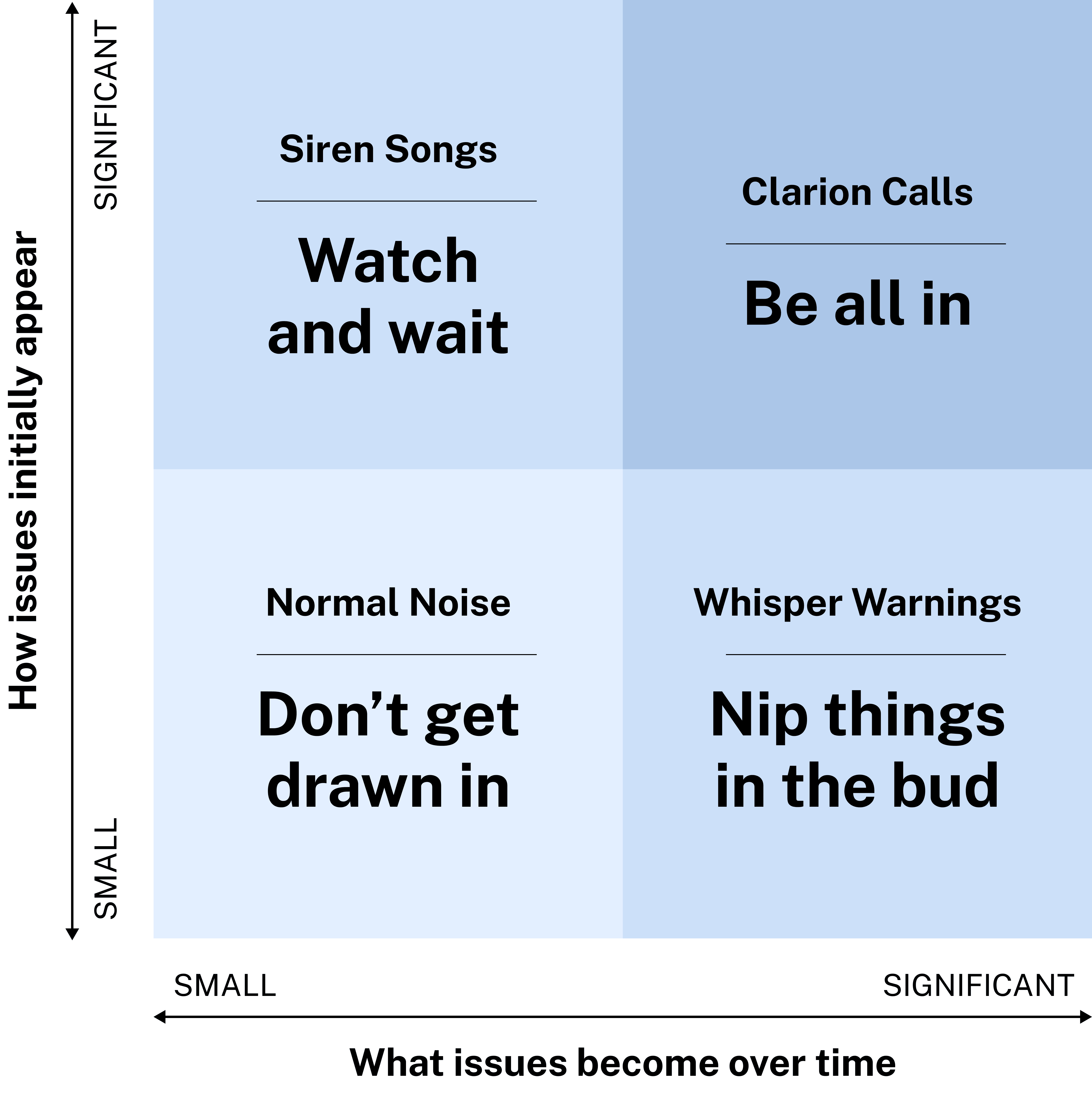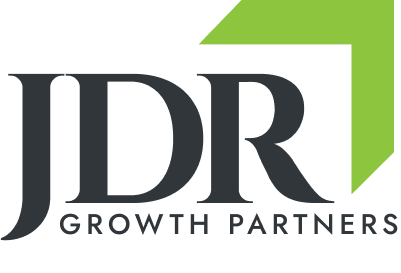One of the greatest tests of leadership is the ability to navigate ambiguity and uncertainty brought on by unexpected disruptions. While it’s easier to lead in calm conditions, real leadership is forged during periods of turbulence. The recent surge in tariff unpredictability is one such challenge—requiring leaders to respond with both agility and foresight.
“Smooth seas do not make skillful sailors.”
— African Proverb —
Navigating Uncertainty as a Leader
When crises strike, it’s natural to focus on immediate survival. Yet leaders must also scan the horizon for transformational opportunities. This dual focus—managing today while planning for tomorrow—is where strong leadership sets itself apart.
Uncertainty drains organizational energy. Operational pressures from tariffs can consume attention, leaving little room for strategy. But this is precisely when strategic clarity is most essential.
The human brain is programmed to narrow its focus in the face of a threat. It’s an evolutionary survival mechanism designed for self-protection. The trap is that your field of vision becomes restricted to the immediate foreground. Leaders must avoid the trap because the future is planned now, not later, and learnings from the past can illuminate the path forward. Those who hunker down and wait will fall behind.
Lessons from Disruption: A Historical Perspective
In the face of uncertainty or a crisis, leaders need to be resilient, agile, and take action with the appropriate sense of urgency needed to survive and even thrive financially. We also know from history how important it is to anticipate marketplace changes caused by structural breaks in the way we do business.
For example, the depression of 1893-97 spawned a more consumer-oriented economy in which several entrepreneurs, such as Milton Hershey, built lasting empires. General Electric was also born during this time as several innovations triggered a new economy fueled by electricity.
Later, during and shortly after the Great Depression of the 1930s, many industries such as railroads, rubber, steel and glass suffered. But several new companies and brands flourished during these hard times as consumer behavior changed dramatically. Airline travel grew exponentially, and campgrounds and motels blossomed along highways. The radio and movie industries exploded during what became known as the Golden Age of Hollywood. Those leaders who astutely read and anticipated changing consumer behavior and preferences benefited mightily.
IBM, Uber, General Motors, Slack, Procter & Gamble, Square, HP, Hyatt, CNN, MTV, Instagram, Sports Illustrated, Microsoft, and United Technologies were all created during hard times and economic disruptions.
7 Steps to Turn Crisis into Competitive Advantage
1. Support Your People and Communicate Relentlessly
The tariffs are receiving a lot of press coverage. Assume your people are consuming at least some of it. While some of this coverage can help educate, much of it is designed to sensationalize—if not scare—people. While you might not have answers to all their questions, remember that servant leadership presence is required most during times of uncertainty.
Make sure your people know you care about them. Ensure that everyone is receiving 1:1s with their supervisor on a regular basis. This is important in regular times for talent development, and it’s even more critical now as the need for support heightens.
Maintain career pathing and succession planning. Are there any difference-makers worthy of promotion that you could announce over the next month to send a message that people are still growing at your company? They need genuinely good news to balance the bad. Be generous with well-deserved accolades to reinforce your values and culture, and to put success models on a pedestal to reinforce the behaviors you desire.
Remember, the farther you get from the top of an organization, the less your people know about what is going on. Most of your workforce cares about the future of your company, and they want to know how the uncertainty might impact them. Your best and brightest want to know how they can help. They might even have a few good ideas for improvement if they had more opportunities to share them.
“The single biggest problem in communication is the illusion that it has occurred.”
— George Bernard Shaw —
As George Bernard Shaw said, “The single biggest problem in communication is the illusion that it has occurred.” You cannot over-communicate in these situations. Just make sure it’s focused and delivered in a way that meets your workforce where they are, not where you wish they were, and enables them to step up and contribute to winning.
2. Lean into Purpose & Culture
Reconnect with the foundational statements about your organization’s vision and mission. If constructed authentically, these statements should provide a road map for tough choices. Just as character is defined by what you do when nobody is looking, your future culture will be defined by how you and your team traverse increased uncertainty.
Whatever the changes your organization is encountering, pay attention to the impact on your culture. In times of increased uncertainty, people are stressed, and relationships often become frayed. Communication breaks down, collaboration sometimes deteriorates, and productivity may be adversely impacted.
Anticipate and act on these changes before they become the new norm for your organization. Focus on leveraging this uncertainty to build an even higher-performing team grounded in trust, fueled by the way you led throughout the challenges you now face.
3. Focus & Balance
Survival is a prerequisite—but it’s not enough. Leaders must also prepare to emerge stronger. Drawing inspiration from Mike Tyson’s quote, “Everybody has a plan until they get punched in the mouth,” the best leaders adapt quickly when plans collide with reality and uncertainty prevails.
“Everybody has a plan
until they get punched in the mouth.”
— Mike Tyson —
To stay focused on what matters most, distinguish between urgent and truly important challenges. Where can you add the most unique value? Are the resources within your sphere of influence allocated wisely, given the current challenges? I like using frameworks such as Stephen Covey’s four-quadrant approach or Nitin Nohria’s 2×2 response matrix detailed in Leaders Must React.

In Nohria’s Matrix, identifying which quadrant an issue fits into requires a leader to estimate its magnitude, now and in the future. To tell a “whisper warning” from a “siren song,” leaders need intuition, pattern recognition, and skill at prediction and forecasting – abilities that tend to grow with experience.
Nohria details how the best leaders stay attuned to what is going on in their organization and external environments. They cultivate a wide and varied network of sources who provide them with timely feedback, and they tend to the network purposefully, inviting candor and avoiding the sycophantic “success theater” that surrounds leaders who want to hear only good news.
4. Strategize
Strategic planning often suffers during crises. Leaders either cling to old plans or abandon planning altogether. Both approaches are flawed.
Most supply chains have been disrupted significantly and will likely encounter lasting structural changes going forward. For each of your objectives, goals, and strategies in your strategic plan, work with your team to ensure focus on the initiatives that matter most across the organization in three phases: during the upheaval, recovery, and once we enter a “new normal.” To achieve thrust, debate and decide what should be stopped, postponed, continued, or started during all three phases, depending on a range of scenarios, and agree on the milestones that will trigger strategic actions.
Importantly, the alignment of resources across the organization is critical to ensure agility and accelerate the highest priorities. This coordination must be orchestrated by the leadership team. Otherwise, the increased uncertainty could cause the organization to flail in silos with uncoordinated fits and starts if leaders are not synchronizing strategic direction, alignment and commitment cross-functionally.
5. Get Closer to Customers
Economic disruptions change the priorities of your end users and customers. Go beyond traditional relationship management. Study how their world might evolve. What need gaps might be created that your company can fulfill faster and better than anybody else? How can you help them in ways that will build your brand equity even if it is not profitable in the short term?
6. Streamline & Optimize
As the old saying goes, never let a good crisis go to waste! In normal times, most wise efforts to reduce complexity are met with corporate inertia and resistance to change. Keep in mind that people don’t fear change; they fear loss, and most change involves some level of loss. The uncertainty caused by an economic disruption lowers those barriers because people are more risk-taking in losses than they are in gains. Take advantage of it to repair inefficiencies and focus resources where they add the most economic value.
Many companies tolerate inefficiencies or looming problems with their operations and/or go-to-market approach in good times. For example, one of my clients manufactures cleaning products and turned a blind eye to a weak link in their supply chain because of legacy relationships and other sacred cows. The recent tariff disruption broke the link, and we quickly marshaled a cross-functional team to fix it much faster than would have happened absent the crisis. They will emerge stronger.
7. Invest in Assets and Talent
It’s often a buyer’s market when a crisis strikes. It’s a great time to seek complementary assets and talent. Are there competitors or suppliers who possess a strength that complements your organization’s weaknesses and could be acquired for pennies on the dollar because they have been severely wounded by the crisis? It’s also a great time to strengthen your talent quotient by ramping up recruiting efforts for key needed positions.
Emerge Stronger
Tariff volatility and global crises present unfamiliar leadership terrain. Decisions made now will be scrutinized and remembered. Yet history shows that challenges also create windows for reinvention and growth.
Balancing short-term survival with long-term value creation is the leader’s charge. Those who seize the moment to evolve their strategy, culture, and operations will not only weather uncertainty—they’ll emerge as industry leaders.





